Onel Luiz Alcaraz López
Performance Analysis of Centralized and Distributed Massive MIMO for MTC
Apr 11, 2023Abstract:Massive Multiple-Input Multiple-Output (mMIMO) is one of the essential technologies introduced by the Fifth Generation (5G) of wireless communication systems. However, although mMIMO provides many benefits for wireless communications, it cannot ensure uniform wireless coverage and suffers from inter-cell interference inherent to the traditional cellular network paradigm. Therefore, industry and academia are working on the evolution from conventional Centralized mMIMO (CmMIMO) to Distributed mMIMO (DmMIMO) architectures for the Sixth Generation (6G) of wireless networks. Under this new paradigm, several Access Points (APs) are distributed in the coverage area, and all jointly cooperate to serve the active devices. Aiming at Machine-Type Communication (MTC) use cases, we compare the performance of CmMIMO and different DmMIMO deployments in an indoor industrial scenario considering regular and alarm traffic patterns for MTC. Our simulation results show that DmMIMO's performance is often superior to CmMIMO. However, the traditional CmMIMO can outperform DmMIMO when the devices' channels are highly correlated.
Statistical Analysis of Received Signal Strength in Industrial IoT Distributed Massive MIMO Systems
May 02, 2022
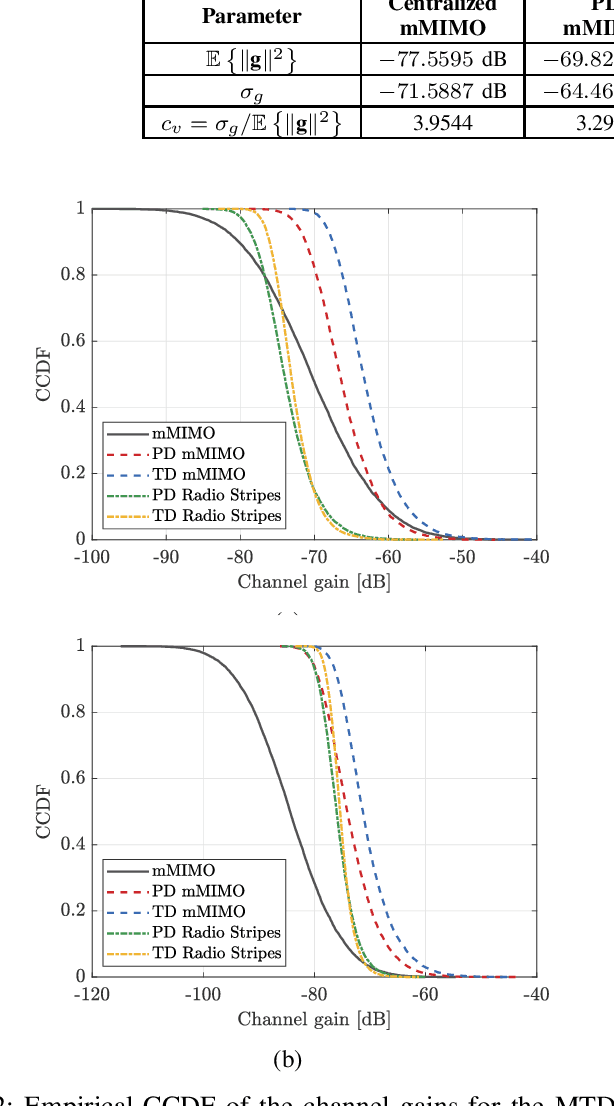
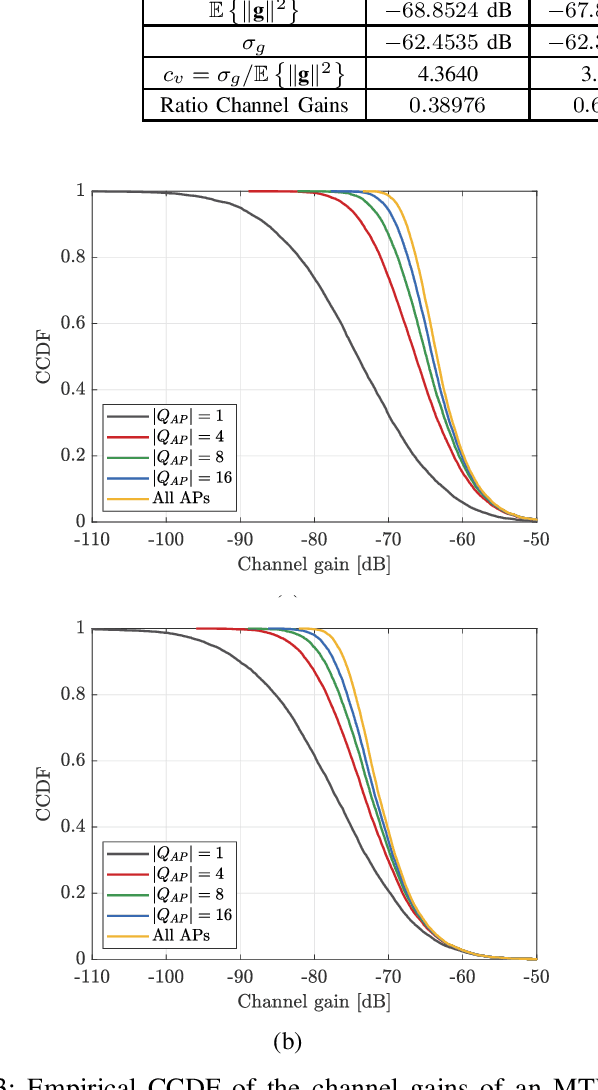

Abstract:The Fifth Generation (5G) of wireless networks introduced native support for Machine-Type Communication (MTC), which is a key enabler for the Internet of Things (IoT) revolution. Current 5G standards are not yet capable of fully satisfying the requirements of critical MTC (cMTC) and massive MTC (mMTC) use cases. This is the main reason why industry and academia have already started working on technical solutions for beyond-5G and Sixth Generation (6G) networks. One technological solution that has been extensively studied is the combination of network densification, massive Multiple-Input Multiple-Output (mMIMO) systems and user-centric design, which is known as distributed mMIMO or Cell-Free (CF) mMIMO. Under this new paradigm, there are no longer cell boundaries: all the Access Points (APs) on the network cooperate to jointly serve all the devices. In this paper, we compare the performance of traditional mMIMO and different distributed mMIMO setups, and quantify the macro diversity and signal spatial diversity performance they provide. Aiming at the uplink in industrial indoor scenarios, we adopt a path loss model based on real measurement campaigns. Monte Carlo simulation results show that the grid deployment of APs provide higher average channel gains, but radio stripes deployments provide lower variability of the received signal strength.
Network Slicing for eMBB and mMTC with NOMA and Space Diversity Reception
Jan 13, 2021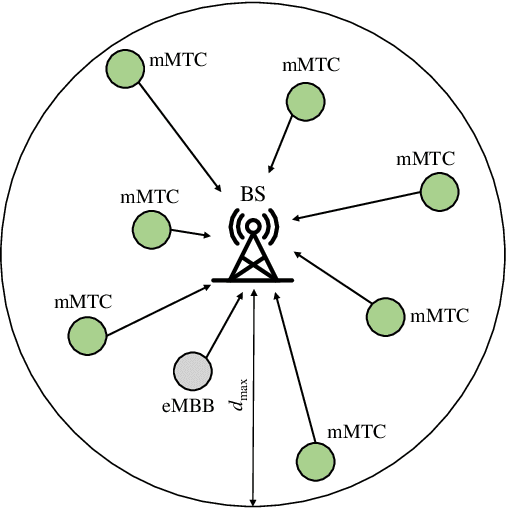
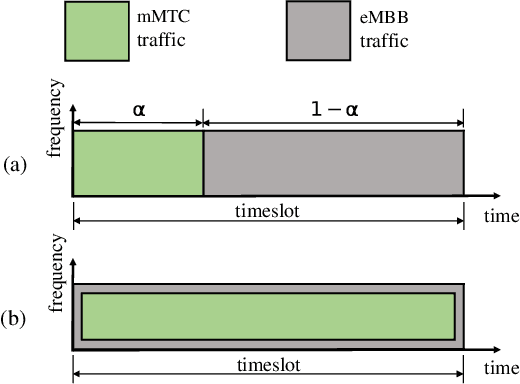
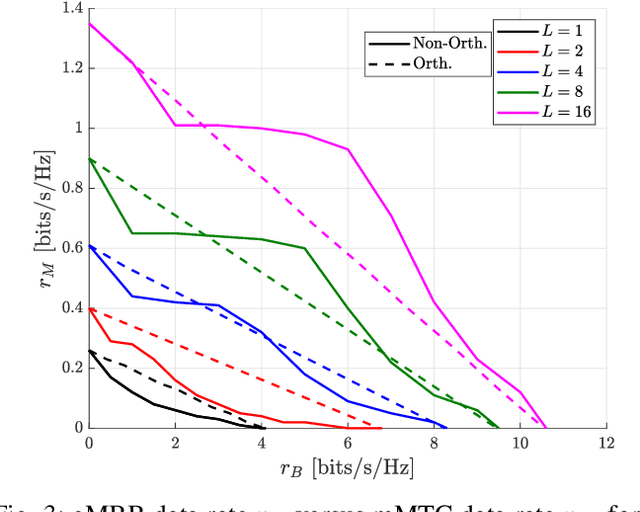
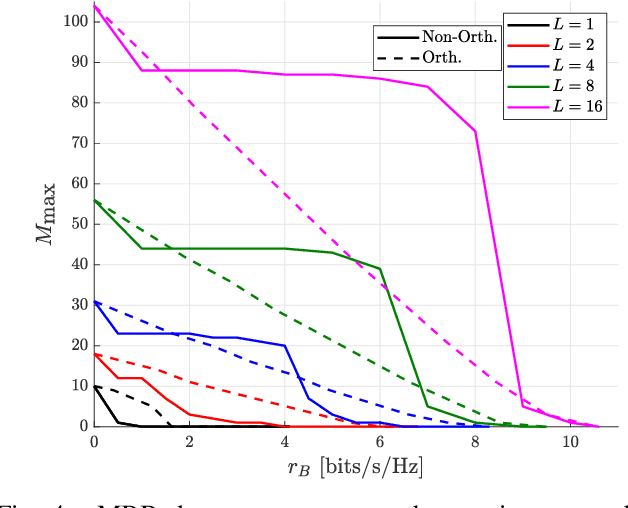
Abstract:In this work we study the coexistence in the same Radio Access Network (RAN) of two generic services present in the Fifth Generation (5G) of wireless communication systems: enhanced Mobile BroadBand (eMBB) and massive Machine-Type Communications (mMTC). eMBB services are requested for applications that demand extremely high data rates and moderate requirements on latency and reliability, whereas mMTC enables applications for connecting a massive number of low-power and low-complexity devices. The coexistence of both services is enabled by means of network slicing and Non-Orthogonal Multiple Access (NOMA) with Successive Interference Cancellation (SIC) decoding. Under the orthogonal slicing, the radio resources are exclusively allocated to each service, while in the non-orthogonal slicing the traffics from both services overlap in the same radio resources. We evaluate the uplink performance of both services in a scenario with a multi-antenna Base Station (BS). Our simulation results show that the performance gains obtained through multiple receive antennas are more accentuated for the non-orthogonal slicing than for the orthogonal allocation of resources, such that the non-orthogonal slicing outperforms its orthogonal counterpart in terms of achievable data rates or number of connected devices as the number of receive antennas increases.
 Add to Chrome
Add to Chrome Add to Firefox
Add to Firefox Add to Edge
Add to Edge